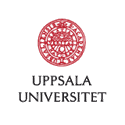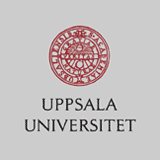3D printing and bioprinting in the life sciences (5hp), 5 hp
| Kursnummer | 42 |
| År | 2022 |
| Typ | Methodcourse |
| Spår | - |
| Max antal deltagare | 8 |
| Sista ansökningsdag | 2022-08-25 |
| Språk | En |
| Kursansvarig | Olle Eriksson, Johan Kreuger, Adam Engberg |
| Institution | Inst för Medicinsk cellbiologi |
| Besöksadress | BMC, B3:2 |
| Postadress | Husargatan 3, Box 571 |
| Datum | 2022-10-10 - 2022-12-18 |
| Lokal | BMC |
| Kurslängd | 10 weeks 33%; late afternoon/evenings (16-18) |
| Kursrapport | Kursrapport |
| Kursplan | Kursplan |
Beskrivning
Kursen introducerar de möjligheter som 3D-printning och bioprintning erbjuder forskare och innovatörer inom medicin, biologi och biokemi. Kursen inleds med föreläsningar om 3D-printning och bioprintning. Därefter följer undervisning i 3D-modellering och praktisk 3D-printning med tillhörande projektarbete under handledning. Projektarbetet syftar till att konkretisera en egen idé kopplad till en forskningstillämpning inom medicin, biologi eller biokemi. Arbetsprocessen samt projektresultat dokumenteras genom en reflekterande rapport.
Inlärningsmål
Kursens övergripande mål är att ge grundläggande kunskaper om 3D-printning och bioprintning, samt god kännedom om därtill relaterade praktiska tillämpningar inom medicin, biologi, och biokemi. Efter kursen skall studenten kunna:
- förklara principerna för stereolitografi (SLA) och fused deposition modeling (FDM)
- förklara principerna för bioprintning
- redogöra för olika användningsområden av 3D-printning och bioprintning inom livsvetenskaperna
- redogöra för processen att gå från idé till ett färdigt 3D-printat objekt
- formulera en projektbeskrivning för ett eget mindre 3D-printningsprojekt, samt planera och genomföra detta
- skapa en enkel 3D-modell med hjälp av 3D-CAD
- utföra 3D-printning av egen 3D-modell
- kritiskt värdera och analysera objekt skapade genom 3D-printning för användning inom livsvetenskaperna
Innehåll
Undervisningen består av föreläsningar, teoretiska uppgifter, samt workshops och praktiska projektuppgifter under handledning. Kursen ges på engelska.
Undervisning
För att vara behörig till kursen så behöver du vara antagen till utbildning på forskarnivå. Vid fler sökande än platser, sker urval på basis av datum för ansökan till kursen.
Examination
Examination sker genom följande obligatoriska moment: individuella inlämningsuppgifter i form av 3D-printade objekt, muntliga presentationer med tillhörande diskussioner, samt avslutande individuell reflekterande rapport som beskriver kopplingen mellan teori, metod och resultat.
Litteratur
Gibson, I.; Rosen, D.; Stucker, B.
Additive Manufacturing Technologies: 3D Printing, Rapid Prototyping, and Direct Digital Manufacturing
New York, Springer Science+Business Media, 2015
Obligatorisk (finns tillgänglig via universitetsbiblioteket)
Lärare
Johan Kreuger, Olle Eriksson, Adam Engberg och expertföreläsare från akademin och industrin.
Kontakt
Olle Eriksson
olle.eriksson@mcb.uu.se


